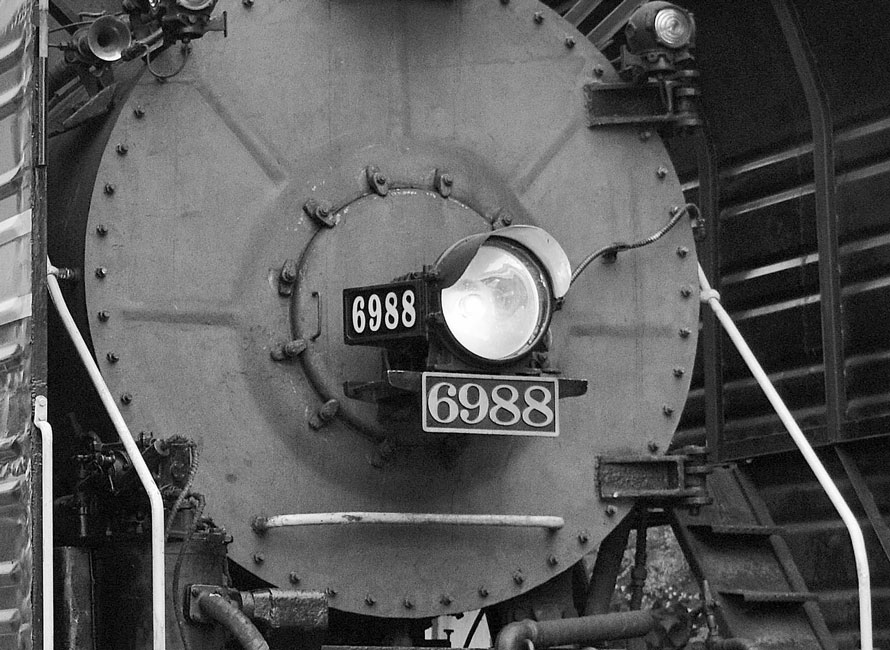
A line of severe thunderstorms had just rumbled through Silvis, Illinois on a hot June Sunday morning. The clouds parted and the sky quickly filled with billowing smoke and steam from an idling locomotive preparing for its last run. No, this was not 1953 when the last Rock Island steam locomotive dropped its fire for the final time. This was June 12, 2022, and Iowa Interstate’s QJ-6988 was getting ready to highball eastbound with freight train SIBU-12 to Bureau Junction.
This trip was to be memorable but bittersweet, for in just a few hours, QJ-6988’s flue time would expire and the fire would be dropped for the last time for quite awhile. “Going into hibernation,” as one railfan put it. Actually, the locomotive’s flue time had already expired, but its owner, the Central States Steam Preservation Association (CSSPA), had been granted a small extension on the flue time by the Federal Railroad Administration, allowing for one final farewell run.
For the crew, despite the end quickly approaching, today’s journey was just another routine “steam day” and everyone was excited to show off the relic of railroading from a foreign land to the public. This final run took place in QJ-6988’s 16th year in the United States. Built in 1985 at the Datong Locomotive Works in China, the prestigious workhorse of a 2-10-2 spent the first part of its life hauling freight and passenger trains over the Chinese rail network, the most notable line on which it served being the famed Jining-Tongliao Railway in Inner Mongolia.
From 1956 to 1988, over 4,000 QJs (Qián Jìn) were produced. However, soon after production stopped, China’s railways began implementing diesel and electric locomotives to replace steam, much like America had done so decades before. The QJs were quickly plucked from the rosters, and by 2015, none were left in regular service. QJ-6988 and sister QJ-7081 were both retired in 2005, however, instead of meeting the scrapper’s torch, they were purchased by an American group and shipped to the United States in 2006 for use on special trains over the Iowa Interstate Railroad. QJ-7081 last operated in 2013 before its flue time expired, and after today, QJ-6988 would follow suit.
At 10:20 AM, with two sharp reports on the locomotive’s Grand Trunk Western 6-chime whistle, the train departed Silvis for Bureau, where it would be wyed and run back west to Silvis as train BUSI-12. A few miles outside of Silvis, the train paused to let some BNSF traffic clear a diamond, then it was off to the races.
At Geneseo, Illinois, the train was greeted by a crowd of railfans at the restored Rock Island depot. (Iowa Interstate utilizes the former Rock Island’s Chicago to Omaha main.) My friends and I had set up in the photo line, but at the last minute I decided to move back a ways to include the group of railfans in the shot. The last time I had encountered QJ-6988 was in 2019 when the Iowa Interstate ran a series of fire department benefit excursions out of Chillicothe, Illinois. There, at best, the train made it up to a leisurely twenty-five miles an hour. What was about to happen in Geneseo was completely different.
. . . whistle blowing violently, loud stack exhaust, and a light but steady trail of smoke gracefully lifting over the town.
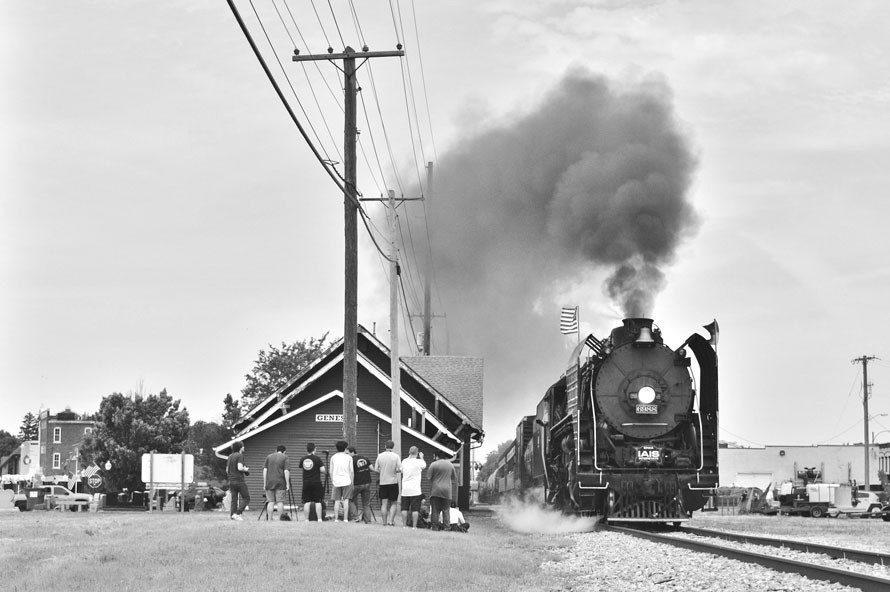
A few minutes later, a smoke plume and a distant headlight appeared on the horizon. It was train time. With the throttle wide open and the reverser pulled back, SIBU-12 was barrelling down on the Geneseo depot at track speed (which is almost full speed for the locomotive) with whistle blowing violently, loud stack exhaust, and a light but steady trail of smoke gracefully lifting over the town. There was no doubt that the crew had every intention of showing the world what their locomotive could really do. Twenty-five miles an hour? Not today.
At Annawan, the train paused briefly and then continued east, storming out of town as photographers utilized the “Welcome to Annawan” sign in their shots. The chase was on. Highway 6 became a two-lane, one-way road as chasers battled the pacers to get around them and ahead of the train. It got rather dangerous at times, actually, but I suppose that is to be expected with a mainline steam trip.
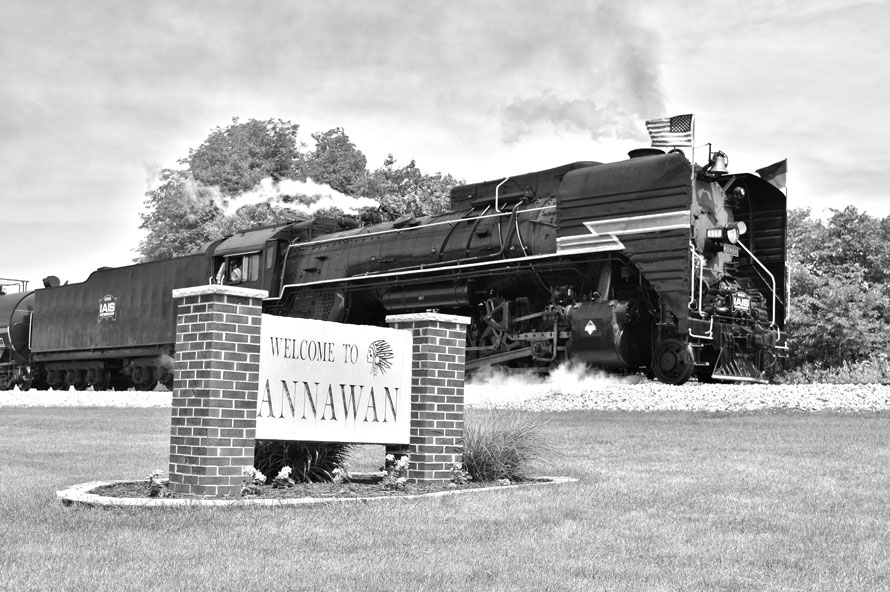
QJ-6988 started to show that it was getting tired at Mineral, when the feedwater heater malfunctioned. A temporary fix was made, and the trip resumed, though at a slightly slower pace. We caught up with the train just outside of Mineral at a farm access road crossing, where a nice run by took place. A friendly Iowa Interstate engine crew flipped on the ditch lights for us on a diesel locomotive at the rear of the train so we could get some nice “going away” shots (Thanks, fellas!).
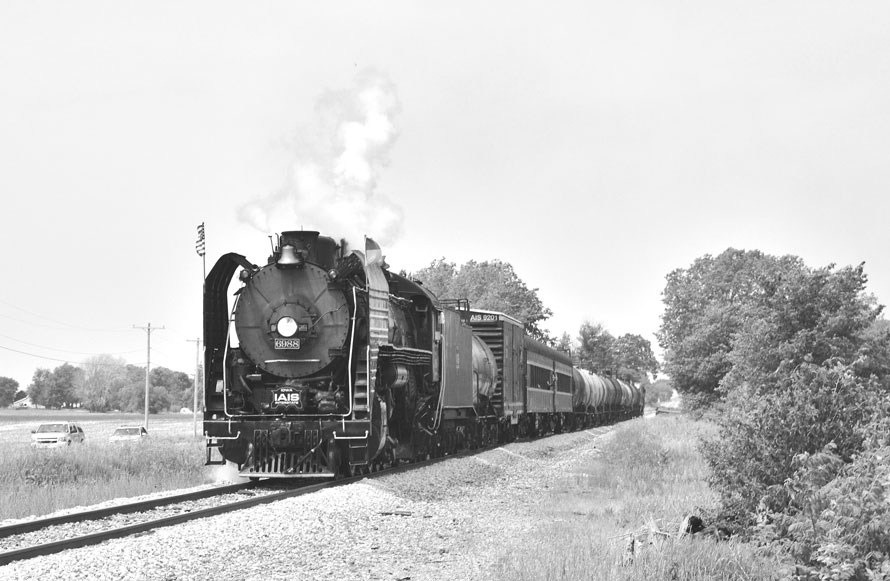
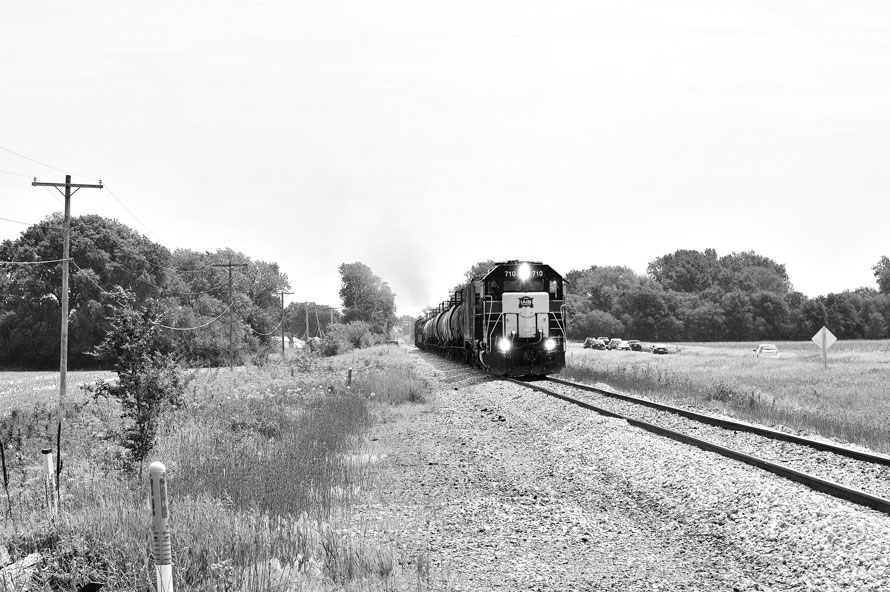
For us, it was a race to Bureau to ensure we got there in time for the train’s arrival. QJ-6988 cruised through the Illinois countryside, and into the hills of the Illinois River Valley. In addition to railfans, locals showed up trackside just about everywhere to witness the rare occasion. It is quite likely that they were unaware that it was QJ-6988’s final run.
At Bureau, the train stopped on the south leg of a wye for servicing and a cookout to show appreciation for CSSPA crew members. The feedwater heater was tinkered with again and fixed well enough that the train could make it back to Silvis. Meanwhile, crowds gathered at the abandoned Rock Island depot in downtown Bureau to watch the train traverse the final leg of the wye and depart westbound.
An hour later, a long blast of the whistle signaled everyone to get back on board, and before long, GP38-2 No. 710 (older than the steam locomotive!) led the train into downtown past the final switch on the wye. The switch was lined back onto the Iowa Interstate’s Blue Island Subdivision, and after pushing the reverser forward, the engineer of QJ-6988 made a dramatic exit from Bureau, with a quick blowdown of the cylinders and a tower of thick black smoke shooting into the sky.
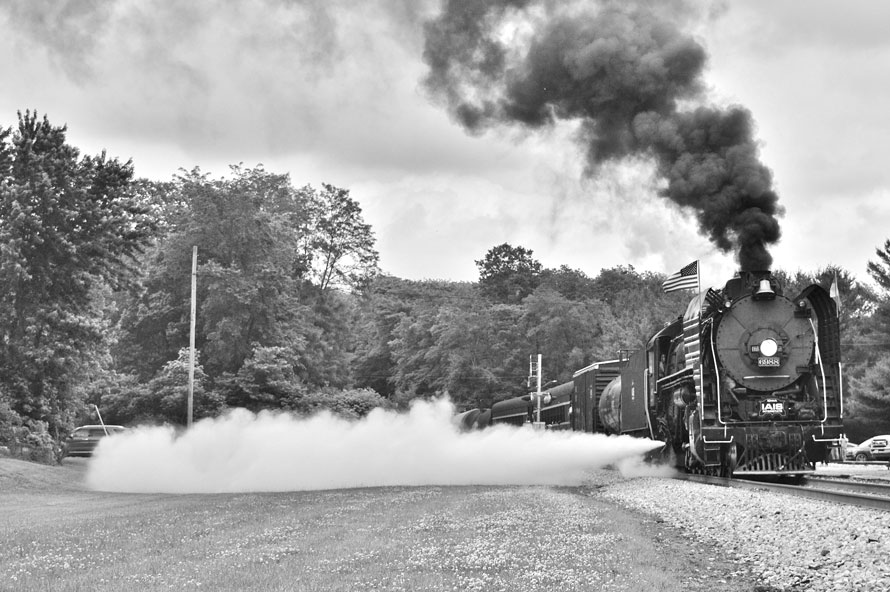
Due to the dangerous road conditions from all the pacers and chasers, we opted to stop the chase at Bureau, and watched QJ-6988 leave our view for the last time. The train returned to Silvis without any issues, and the fire was dropped. QJ-6988 was now officially “out of service.” The final run was nothing short of spectacular, though—a very fitting send-off in my opinion.
There is a positive end to the story. Upon returning to Silvis, the locomotive was shoved inside of the new Railroading Heritage of Midwest America shop facility adjacent to the Iowa Interstate Yard. Formerly a repair shop for the Rock Island and later a National Railroad Equipment shop, the massive building is now QJ-6988’s home, replacing a smaller facility in Newton, Iowa.
It is here that the locomotive will be rebuilt and eventually returned to service, though the project is expected to take several years. Soon, QJ-6988 will share the shop with other “steam stars,” Union Pacific 4-6-6-4 No. 3985 and 2-10-2 No. 5511, which were recently donated by Union Pacific. QJ-7081 is also expected to be moved there eventually to join the collection. For more information, visit www.rrhma.com.
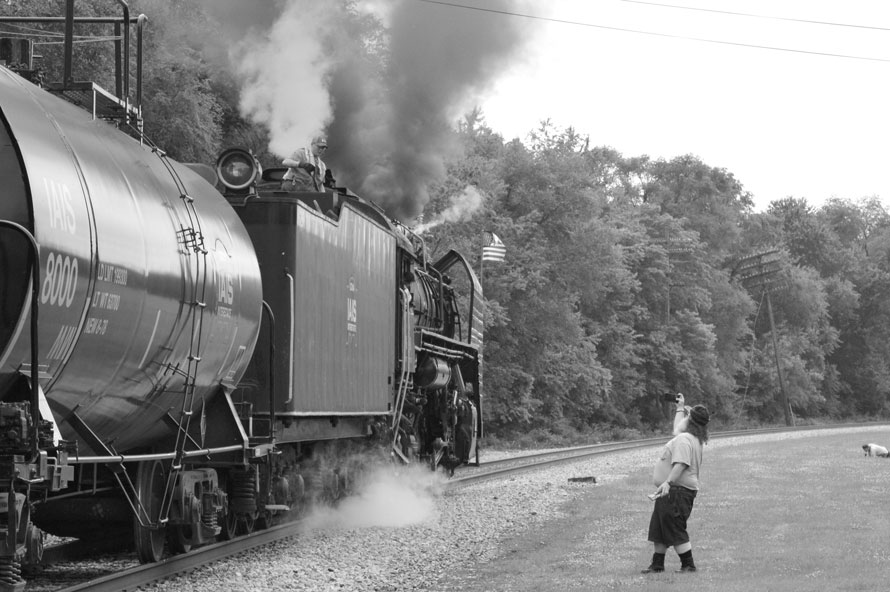
It may be a cold engine now, but QJ-6988’s career is far from over.
Thomas Dyrek – Photographs and text Copyright 2022
Many thanks for these wonderful photos and story. That is familiar territory, as it was part of my responsibility when working or the Rock Island.
So very well written, with heart and intellect and appreciation. The B&W’s are equal to the written story. All-in-all, a great piece. Thanks for photographing, writing, for having Trackside Photographer run the story. Bill
Very cool stuff, Thomas!